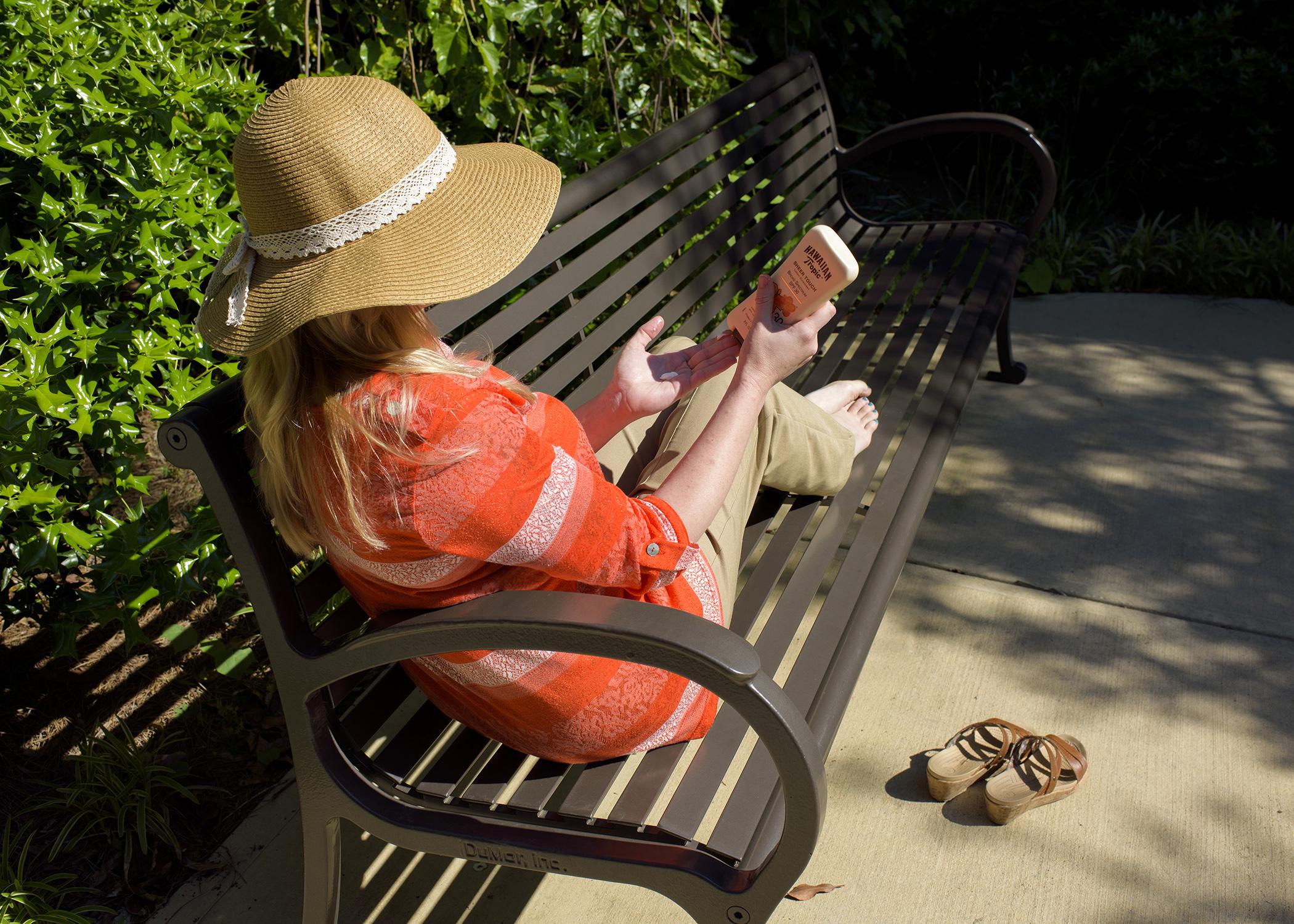Information Possibly Outdated
The information presented on this page was originally released on May 5, 2015. It may not be outdated, but please search our site for more current information. If you plan to quote or reference this information in a publication, please check with the Extension specialist or author before proceeding.
Take practical steps now to help stave off skin cancer
May is Skin Cancer Awareness Month …
STARKVILLE, Miss. -- She thought the blemish that refused to heal was simply a persistent pimple.
Shelaine Pennington, a Mississippi State University Extension Service agent in Prentiss County, said the dermatologist looked at the spot on her chin and was relatively certain of the diagnosis, but performed a biopsy to be sure.
The doctor confirmed her diagnosis: basal cell carcinoma, the most common form of skin cancer.
“My doctor said, ‘The good news is, if you have to have cancer, this is the best one to have,’ but I was still scared,” Pennington said.
The surgery to remove Pennington’s cancer went very deep and required several stitches.
“It was a lot larger than I thought it would be; the area was about the size of a quarter,” Pennington said. “When I went back a month after surgery to get the stitches out, I showed the doctor a new spot on my nose. It turned out to be pre-cancerous. Now, I’m constantly watching.”
Pennington said she grew up near the water and spent her summers water skiing.
“We didn’t have sunscreen back then; we didn’t even know what it was,” she said. “Then in my 30s, I started getting in a tanning bed, and I did that for 27 years. You don’t think skin cancer is going to happen to you.”
Since her bout with skin cancer, Pennington has given up tanning.
“I’ve learned to love ‘fake bake’ and I will not go out in the sun without sunscreen,” she said. “I wear a sun visor to keep the sun off my face now, too.”
David Buys, a health specialist with the MSU Extension Service, said as good as it feels to soak up the sun, taking proper precautions preserves health in the long run.
“Most people don’t know tanned skin is damaged skin,” Buys said. “That golden brown is actually an injury in the top layer of your skin.”
Buys said anyone going outside should apply a broad-spectrum sunscreen.
“Broad spectrum means it protects your skin from both types of ultraviolet rays, UVA and UVB,” Buys said. “UVA rays are responsible for age spots and your skin aging prematurely. UVB rays burn your skin. It’s important to protect against both.”
When in doubt, apply more sunscreen or reapply it after you have been outside for a while.
“Most people don’t apply enough sunscreen to get the most effectiveness,” Buys said. “Put on a thick layer, and be thorough. Really rub it in, and have someone help you with those hard-to-reach spots. Don’t forget your ears and the tops of your feet.”
Sunscreen is not the only type of sun protection. A wide-brimmed hat, sunglasses with UV protection and protective clothing can help. Loose, long-sleeved shirts also offer protection. A beach umbrella, cabana, canopy, tent and trees offer shade and sun protection, for those who forgot to apply sunscreen.
“It is easy to get distracted while having fun in the water or to fall asleep while reading a book at the beach, so set a timer on your phone to remind you to reapply your sunscreen,” Buys said.
Buys said some sunscreens on the market may include insect repellant, but it may be better to use separate products.
“You’ll need to reapply sunscreen every two hours, but most insect repellants should be only applied once every six hours,” he said. “It’s better to thoroughly apply sunscreen and let it dry completely, then apply insect repellant separately.”
Buys said Mississippians should not wait to have a cancer scare before they begin taking better care of their skin.
“Skin cancer is treatable, but it’s also one of the easiest cancers to prevent,” he said. “Keep an eye on any moles you may have. Look for the telltale signs a mole may be actually be melanoma, such as irregular edges, varied colors and size larger than a pencil eraser.”
It is easy to remember those signs as the ABCDEs of melanoma: asymmetry, border, color, diameter and evolving. Visit the American Academy of Dermatology webpage for more information at http://bit.ly/1xOTmM8.
As for Pennington, she has already had a positive impact on someone she knows.
“My friend saw the pictures I posted on Facebook after my surgery, and showed them to her 13-year-old daughter, who had been begging to go to the tanning bed,” Pennington said. “She told her, ‘This is why you can’t.’
“What I’ve gone through may save someone else from having to go through it,” she said.




